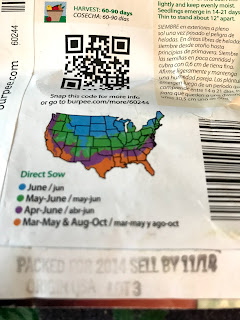More about seeds

Yesterday a friend asked me if seeds must be used the year that you bought them, or can leftover seeds be used the following year. The simple answer is yes, you can save unused seeds from year to year, but be aware that as the seeds age their viability declines so you can expect lower germination rates. Sometimes you will see out of date seeds for sale and you can save money on those seed, but they will not have the germination rate of fresh seed. And you have no idea under what conditions they have been stored for the last year, so it’s a bit of a gamble. Seed packets will be stamped with the year they were packed. Some seed packets will also tell you what the germination rate is. That is the percentage of seeds which will produce a plant, under ideal conditions. For new and vigorous seeds the percent germination is usually between 75 to 85 percent. It goes down over time. I found I had several seed packets from 2014, six year old seed, and I decided to try sprouting the radish s...

